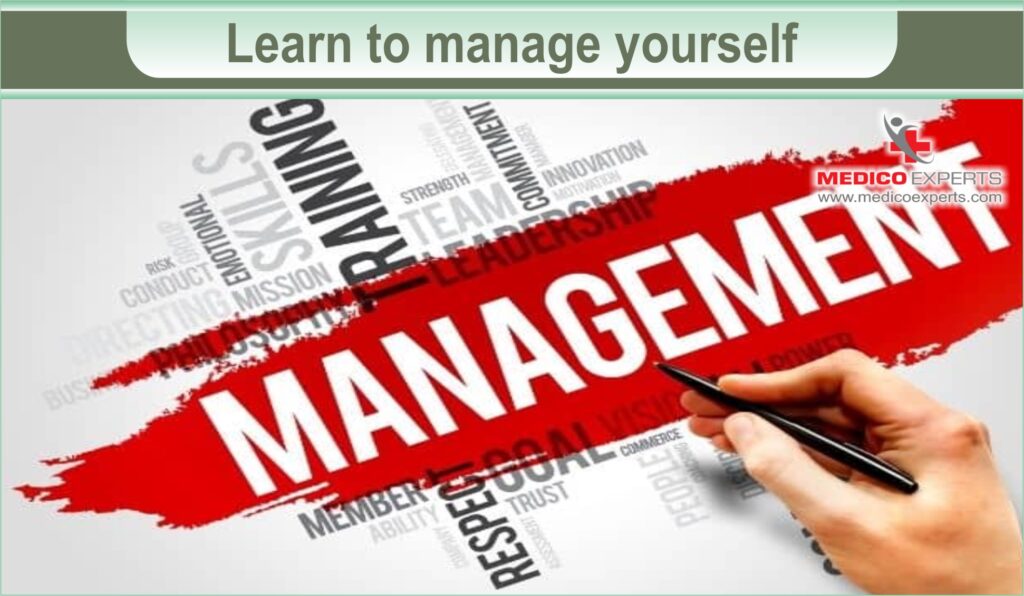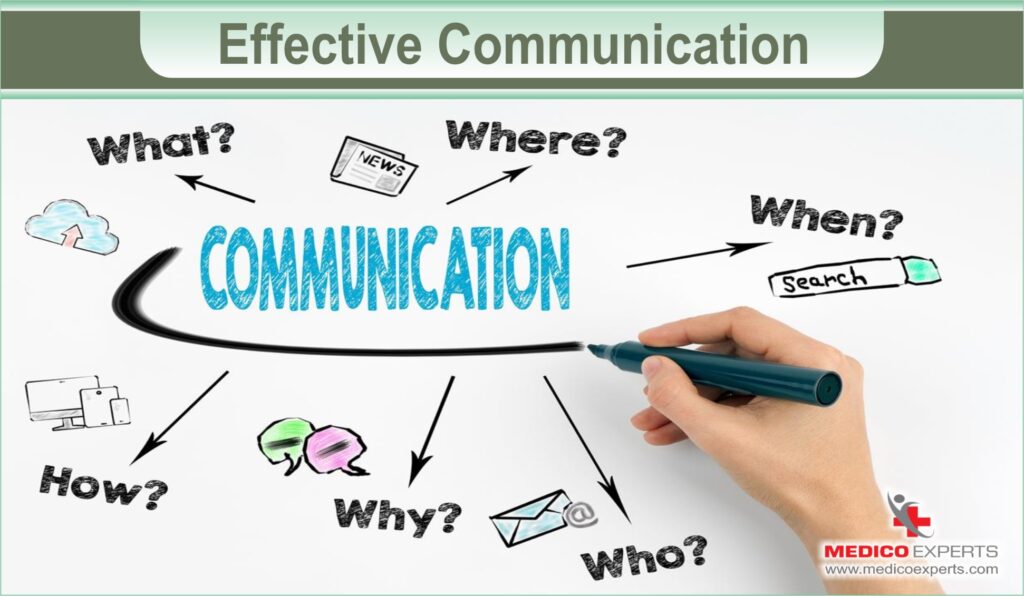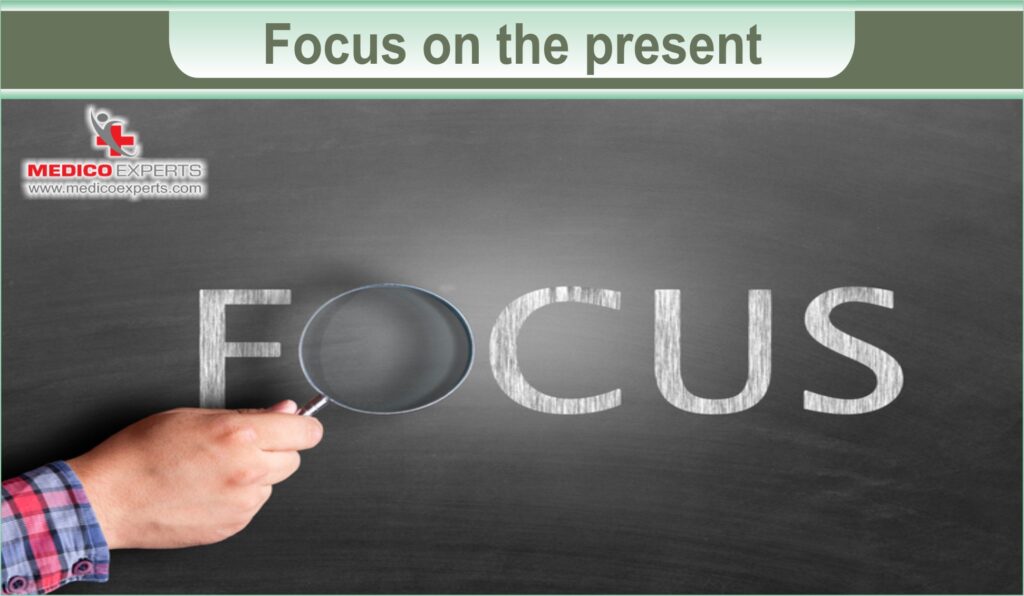Do you know that you can fight victoriously the stress and resultant frustration and anxiety at your workplace?
Yes, it’s very much doable.
With C-suite and leadership jobs, stress is inevitable and this stress leads to irritation, and frustration, and disturbs your peace of mind. But if you take the right steps you can conquer stress and work pressure easily.
Failing to address office stress can lead to damaged relationships with colleagues, a decline in performance metrics, and ultimately, negative effects on your personal life.
If you think that the only way to avoid a stressful situation at the office is to switch workplaces or organizations, you are making a mistake, as you cannot avoid stress and pressure in a leadership job, no matter whichever company you join.
But once you learn to fight stress at the workplace, you can be that confident professional who is not only appreciated by your seniors but also respected by your colleagues. Shifting the gears of your growth curve on the corporate ladder becomes much easier once you learn to handle stressful situations.
How?
The best way is to learn from seniors who have bigger responsibilities, targets, accountabilities, and much higher dependencies on others to perform.
You are not alone in your fight against stress. We are here to help you by revealing effective strategies adopted by senior management including CXOs and entrepreneurs to manage stress and remain focused on their key result areas (KRAs) and performance.
These leaders and achievers have experienced and successfully navigated similar stress-inducing situations in both life and their careers.
Let’s dive down to understand 10 tried and tested ways senior management executives use to reduce stress at work.
10 ways to reduce stress at work

1. Learn to manage yourself:

The Leaders including c-suite job holders, and entrepreneurs know that their environment is the reflection of their actions and behaviors.
Yes, that’s the fact.
That’s why they focus more on managing their energy levels. That’s the reason you will find most of these people are always at high energy levels.
To attain that level of energy, they consistently focus on handling stress, managing anxieties, optimizing their time and concentration, adopting smart working techniques, effective delegation, developing skills, and utilizing goal-tracking frameworks.
The Most important among all is their stress management strategies.
The Hypothesis on which they work is that a stressed and anxious mind
- Can’t think of innovative and smart solutions for problems,
- Can’t look for opportunities in problematic situations,
- Can’t be focused on action plans.
Sounds obvious?
We are sure you already know all of it. But have you tried to manage your stress levels?
And even if you tried, have you succeeded?
You fail to manage your stress level, as you consciously don’t train your mind to handle these situations. Hence, when the situation comes, you start reacting rather than addressing it with planned strategies.
Besides, the problem is finding an easy solution to have better control of your mind that suits you as well.
Let us help you out!
Here are some ways c-suite leaders and super successful entrepreneurs manage their stress levels in order of simplicity to use & adopt.
a. Use Stress-bursting devices
Stress-bursting devices are in trend among today’s generation of leaders. With the fast-paced life, leaders are expected to decide and act fast, so there is little room for conventional methods to calm your mind down to achieve clarity of thoughts.
The most popular device in this category is an Alpha wave generator device. Alpha waves are associated with calmer and more restful mental states, leading researchers to believe that they might contribute to reducing anxiety and stress.
GoRoga is one such device, which is
- Designed in the USA
- CE certified
- Easy to use
- Easy to carry
- Can be used anywhere (home/office/ during travel)
If you want to order this device, you can order at
b. Practice Meditation
This is the most profound and most effective tool used by C-suite leaders. Meditation is the next step of conscious focus. Those who practice meditation have little problem focusing on anything.
And when you are focused, you will automatically have the confidence and get innovative ideas to deal with the problem.
Along with faith and trust in GOD, meditation helps you take your mind to an alpha state on your wish. The alpha state of mind is when you are the calmest and hence completely stress-free. This is the best state of mind for innovative, creative, and constructive ideas.
However, Meditation is a skill that needs regular practice for months, years, and decades ( depending upon your personality) to reach the levels where you can take your mind to an alpha state at will.
This is exactly why stress burster devices (particularly alpha wave generators) are becoming popular among the new generation of leaders.
2. Identify the triggers:

The C-suite leaders and entrepreneurs believe that stress starts with a trigger and there can be multiple reasons for the stress.
Moreover, they also believe that different actions or strategies would be required to address, mitigate, or avoid the trigger and associated reasons.
They don’t generalize the problem or a situation and don’t apply any random quick fix to solve the problem temporarily. Rather they deploy a thought-through action plan to solve the trigger and associated problems for a long-term perspective permanently.
So, these leaders identify the triggering points that increase their stress levels.
The typical stress points for senior levels are certain people in the team, certain capabilities of a team or individual member or team, timelines, Targets, Competition, customer pressures, and investor pressures.
3. Device an appropriate action plan to avoid or mitigate the trigger:

Rather than reacting, they first ensure that their mind is in the right frame to make decisions or chop out the action plan.
They use calming devices, meditation, or any other mind-diverting strategy (such as a hobby, sport, or exercise) to bring back the natural calmness of the mind.
When they are sure that their minds are capable of thinking rationally and calm enough to give innovative, constructive, and goal-oriented ideas, only then, do they design action points for each stress trigger and their associated reasons.
This ensures that they are making decisions and creating action plans considering the bigger picture and needs of the organization rather than reacting to a situation.
Once they deploy an action point in execution, they observe the changes very minutely and, if required, carefully assess the action plan further to get the desired outcomes.
Once the assessment exercise is done they institutionalize the action points by updating systems and processes.
If the action point is modifying their attributes like behavior, communication style, or reaction style, they habitualise the action point by multiple repetitions.
4. Effective Communication:

Clear communication reduces misunderstandings and stress. A good workplace needs people to be able to talk to each other openly and honestly.
Steps to Implement:
a. Active Listening:
Pay attention to colleagues’ perspectives.
b. Express Expectations Clearly:
In addition to meeting expectations, discuss and convey your tasks.
c. Provide Constructive Feedback:
It is essential to provide feedback that is not just helpful but also positive towards the individual.
d. Hold Regular Team Meetings:
Facilitate open discussions to address concerns and updates.
For instance, visualize a team where information flows seamlessly. Effective communication minimizes confusion and ensures everyone is on the same page, reducing stress.
5. Effective time management strategies:

The leaders and senior management executives know very well that time is an unreplaceable resource and they learn the skill of prioritization to maximally utilize their day for urgent and important tasks and also able to extract time for hobbies, sports, and exercises.
They continuously seek better ways to manage their own time and the time of their teams to be most productive individually and with the team.
6. Effective delegation:

The leaders and senior management guys know very well how to delegate and when to delegate. They know very well that they can’t meet their KRAs without delegation.
Delegation is often painful for these guys as it can impact the quality of the outcome.
They learn delegation professionally or with experience and keep on refining the art of delegation.
They use the best ways to delegate without impacting the outcome of delegated work.
7. Avoid negative people and staff:

This is a very common reason for stress in work environments. The Leaders and senior management professionals keep themselves away from negative people, who look for problems everywhere or drain the energy of the whole team with their behaviors and attitude.
These leaders keep motivated solution finders who can find the solution and opportunity in any situation.
They often arrange training for such employees, change reporting, or even make tough decisions when there are no other options left.
8. Pursue their hobbies:

The senior leaders use their hobbies as mind-diverting and mind-calming tools. Your hobby is what you love to do with full focus and dedication and hence helps you to completely divert your mind from the day-to-day chaos.
They identify the hobby which they can pursue on a daily or weekly basis based on their time schedules.
If the hobby includes physical movements such as exercise and sports then it helps much faster.
Once zeroed down, they put conscious effort into pursuing their hobbies on a set frequency and this hobby-pursuing habit brings back the mind to a natural calm state.
9. Focus on the present:

Leaders believe that both the past and future can only be changed if they are focused on the present.
You would invariably find them never remorseing for their past failures. They take lessons from those failures and apply the lessons learned in their present to make the future bright.
They are not even scared about risking their future. What the best they can do today and now is their sole focus most of the time.
Continuous focus on the present gives them the confidence that the future will only be better and brighter than their present in the long term.
10. Short periodic trips with friends or family:

Spending time with loved ones is one of the most known ways to change the mood and make your mind calm and refreshed.
The leaders understand it very well and with effective time management techniques they ensure that they are spending more time with their friends or family on a set frequency outside of the day-to-day environment.
Instead of one long vacation in a year, they prefer more frequent short breaks and never miss long weekends (Weekends which are followed or succeeded by a public holiday)
Conclusion

You spend most of the time of the day in the office. If you are stressed at your workplace, you are stressed almost all the time. Hence you must take action to manage your stress level at your workplace.
Changing the workplace is not a solution. However, preparing yourself with the right ways, effective tools & devices, and strategies for reducing stress is the practical solution.
Most importantly, you need to learn to manage stress and pressure at work and equip yourself with tools like meditation or stress-buster devices.



